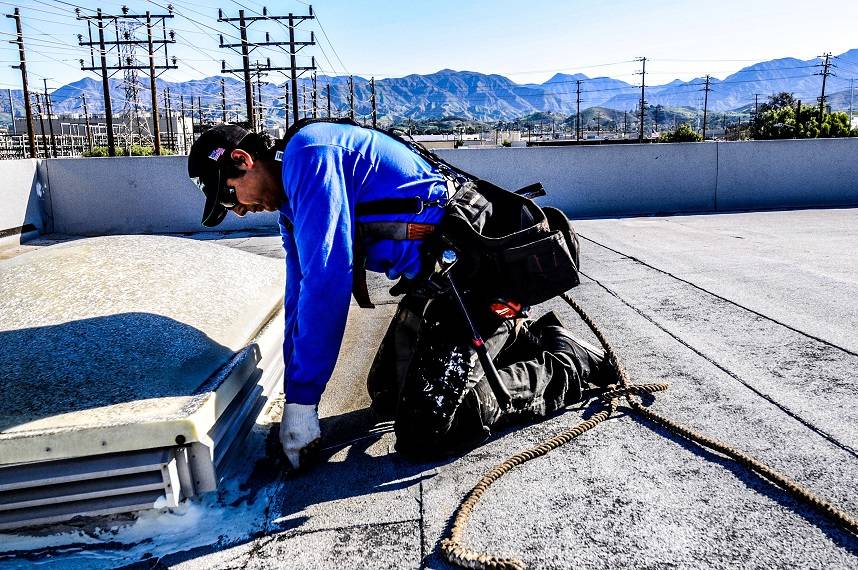At Central Roofing Company, we understand that a sturdy and reliable roof is crucial for the success and safety of your commercial property. Our team of highly skilled and trained roofing professionals is committed to delivering exceptional craftsmanship and superior service in every project we undertake.
Your Easy 5 Point DIY Flat Roof Inspection Checklist
Let’s be honest your flat roof may be the last thing on your mind, that is until you spot a pesky roof leak and by then it maybe too late.
A seemingly minor leak can snowball into a major disaster if left unattended. That’s why regular roof inspections are esstential for a proactive defense.
Flat roofs, commonly adorning commercial buildings but also gracing homes, present a unique set of challenges. While they boast advantages like easy installation and repair, they aren’t without their risks. This is precisely why committing to regular roof inspections is paramount for the longevity and well-being of your property.
Luckily, you don’t always have to hire a roofing company to conduct a flat roof inspection, in fact, if you know what to look for you can quite easily conduct one yourself. Let’s dive in!
#1 Look for interior Staining.
Look at your ceiling and ceiling tiles. Do you see brown or yellowish water spots? Is the ceiling paint starting to bulge? This could be a symptom of a leak above.
#2 Check for Flat Roof Soft Spots.
Taking all the necessary safety percautions, climb the roof and check out the valleys where debris is collected, is the roof material a bit spongy and soft? This could be a sign of failure.
#3 Look for Penetrations.
Look for every fold and seam in the roof membrane around pipes, vents, and corners. Each penetration is another possibility for water intrusion. A quick test for these penetrations is to poke around with a small nail file and then pour a small amount of water and see if water is able to seep through. If the water does seep through then you have sealant failure.
#4 Check the Drains
If your primary roof drain is clogged with debris, your roof overflow drain will kick into action. There’s usually a pipe that spouts out the side of the building to empty the overflow drain, which means you won’t see water coming out of that pipe unless your primary drain is clogged!
# 5 Check the Gutters.
Make sure no leaves or other debris are blocking your gutters. If the gutters are clogged, they can cause water to back up and can cause damage to your roof.
Conclusion
Roofs, just like anything else, have their own lifespan. As the years roll by, they might start showing signs of wear and tear – think leaks, cracks, and other pesky issues that demand attention. That’s where the magic of regular roof inspections comes into play. It’s like giving your roof a little checkup and some TLC to keep it in top-notch shape.
Trust me, if you let those problems linger, they could snowball into major headaches, and let’s be real, some seriously pricey repairs down the road. So, let’s be proactive, catch those issues early, and keep your roof smiling for years to come!
Let’s Fix Your Roof Right — Get a Free Estimate Today
Serving Los Angeles & Orange County for 30+ years.
Trusted. Local. Professional.
Central Roofing Company Headquarters
555 W. 182nd Street
Gardena, CA 90248
📞 310-527-6770

Get A Quote
One of our roofing estimators will gladly meet you to discuss your options and follow up with a free, no-obligation, written estimate.
555 W. 182nd St. Gardena, CA 90248
Ph: 310-527-6770
Our Office Locations:
Our Services
CA license #684960 – Central Roofing, 2025 ©All Rights Reserved | Terms of Use | Privacy Policy | Built by Dymic